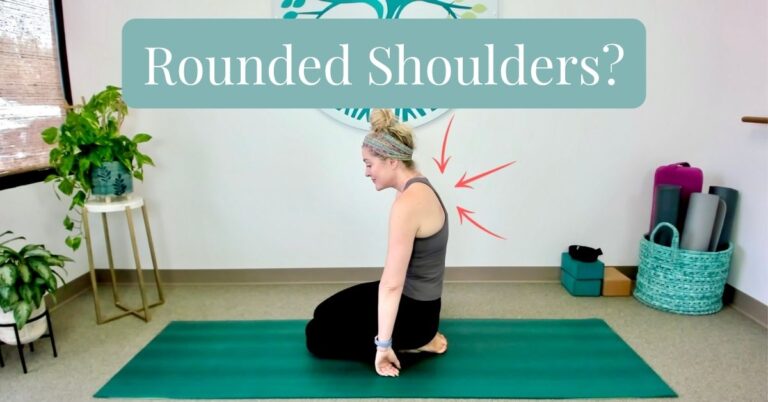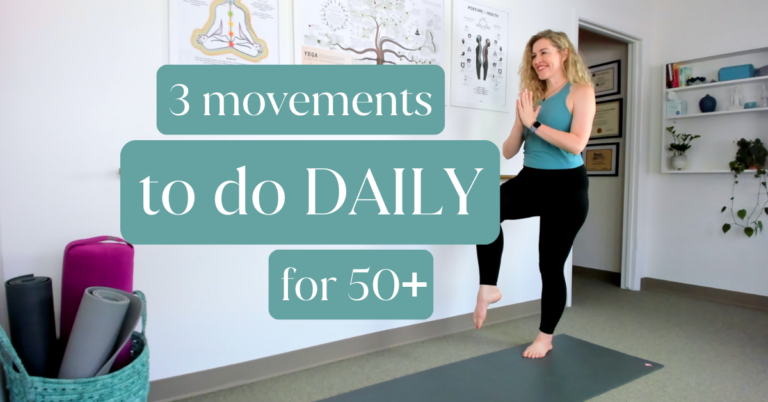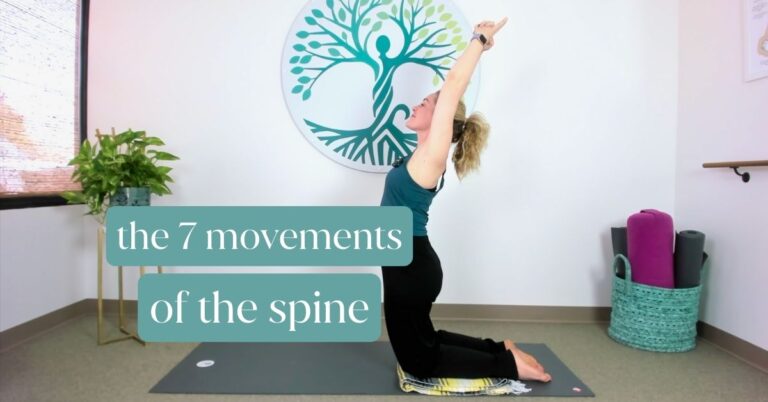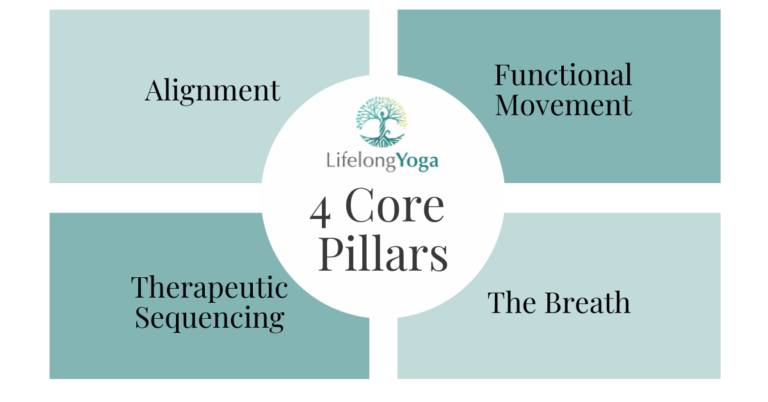3 Yoga Poses for Kyphosis: Fix Your Hunchback with Simple Yoga Exercises
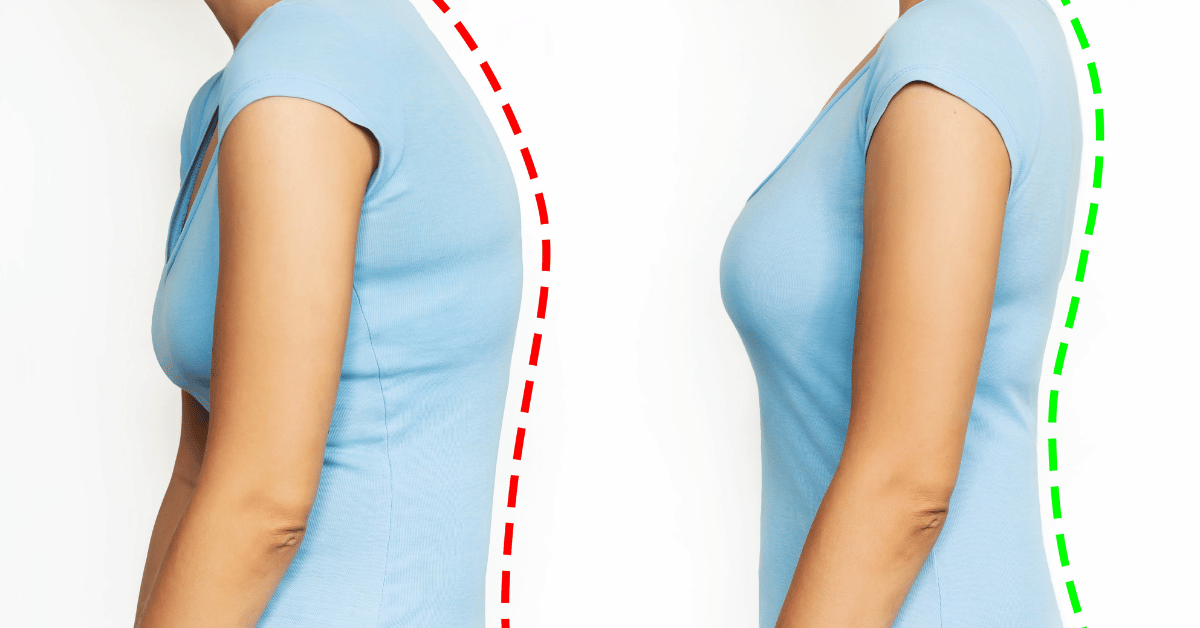
Kyphosis, hunchback, dowager’s hump, text neck…the excessive rounding of your thoracic spine goes by many names! Not only does this hump affect our appearance, but it also takes a toll on our overall health. Explore how three simple yoga poses can work wonders in counteracting poor postural habits that lead to kyphosis, bringing relief and restoring proper alignment to your body.
What is kyphosis and why is it bad for our health?
Sometimes called Dowager’s Hump or hunchback, kyphosis is a rounding of the thoracic spine (your mid to upper back) that often happens over time as we get older. Everyone has a little rounding in this area, so to be clear, in this blog I’m talking about excessive or exaggerated rounding.

This can be caused by:
- Poor posture
- Disc degeneration
- Osteoporosis and spinal fractures
- Other development problems
Today we’ll be focusing on kyphosis caused by poor postural habits, which can be improved! The way we move, sit, and stand is often a major factor in the degeneration of the spine and causes muscular imbalances in the body.
No one wants that hump, not only because we don’t like how it looks, but because it’s not good for our health. It can lead to a number of changes in the body including neck and back pain, poor balance, digestive problems, and difficulty breathing. When you’re slouched over, the lungs have less room to expand, which means you can’t bring as much oxygen into your body. Excessive kyphosis is even associated with increased risk of mortality.
And for those with osteoporosis or osteopenia: Research suggests that excessive kyphosis is not only the RESULT of spinal fractures but may cause them as well.
Luckily, yoga can help! Here are three simple yoga poses to try that will go a long way in counteracting kyphosis and fixing your hunchback.
1. Mountain with Cactus Arms
This is a foundational pose to experience what good alignment feels like in your body. It’s also a great assessment to test how much improvement your posture might need.
Stand tall against a wall with your heels about four inches or so away from the wall. Your pelvis, upper back, and head should all touch the wall. Bring your arms up into a cactus or goalpost shape at about 90 degrees, with the backs of the arms against the wall.
Do not let your back arch up away from the wall. Keep your ribs drawn in. Press the backs of your wrists actively against the wall.

If the back of your shoulders don’t touch the wall, that’s okay. Try bringing your elbows down closer to your waist and focus on squeezing your shoulder blades together behind you.
Add in a chin tuck, where you press the chin straight back and parallel to the floor, without it tilting upward. Tuck and release a few times to fill the engagement of your deep neck flexors, the muscles in the front of your neck.

Most importantly, breathe! Can you find ease in this position? Stay for 8-10 slow, deep breaths.
2. Cat/Cow Variation (Chakravakasana)
The shape of the classic “cat” pose in cat/cow just further emphasizes the rounding in the thoracic spine, so for my students with hyperkyphosis, I encourage them to try this flow variation (chakravakasana) instead of classic cat/cow flow that they might be familiar with.

Start in tabletop position on your hands and knees. On your inhale, lift your chest forward and up, pulling back from the hands, and drawing the shoulder blades together behind you. On your exhale, sit your hips back towards your heels. Lead with your tailbone on the way down as the rest of the body follows. Your chest drapes over your thighs and your neck and shoulders relax.
Move through 6-8 full rounds of breath.
3. Sphinx Pose
Backbends strengthen your back muscles and open up the muscles that get tight in the front of your body.
Lie on your belly and prop yourself up on your forearms, palms planted and fingers spread wide. Press your forearms firmly into the ground and energetically pull the chest forward.

Check that your head isn’t dropping down. Instead, keep the back of the neck long, lining up your ears with the shoulders. Draw your belly slightly up to your spine, lengthening your tailbone down to your heels.
Stay for 8-10 breaths, tuning in to how this pose feels in your body.
Do you feel the opening of your chest? The engagement of the muscles in your back? The length of your neck?
Put it all together!
Want to put these poses together and be guided through a short sequence? Try this video!


